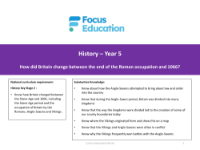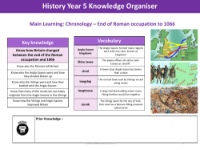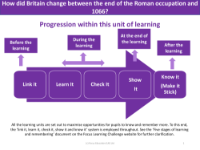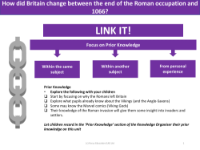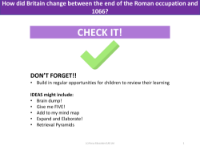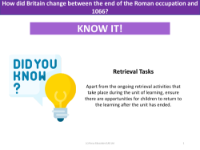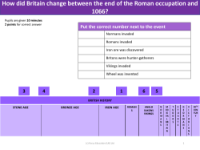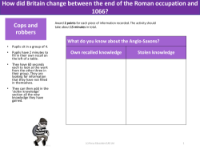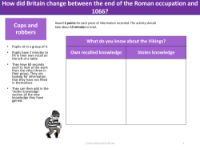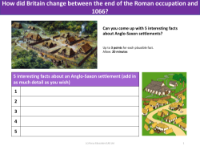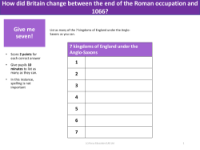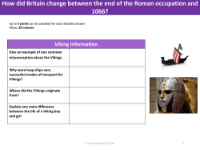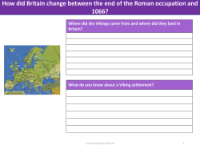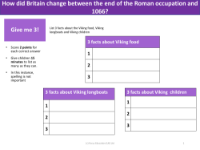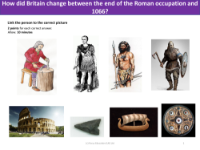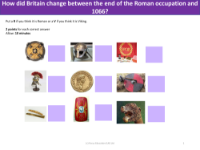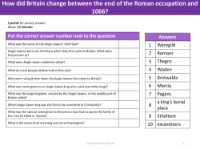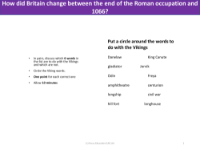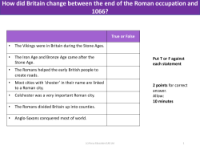Anglo-Saxons, Vikings and Normans - On the timeline
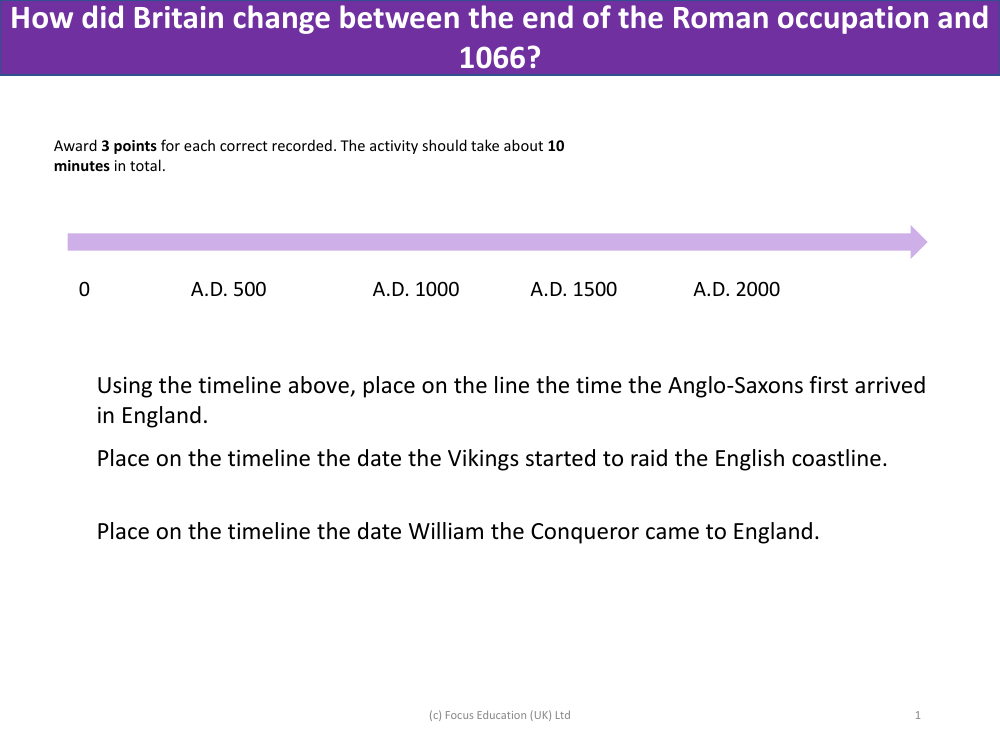
History Resource Description
The activity presented involves a timeline stretching from A.D. 500 to A.D. 2000, where students are tasked with marking significant historical events involving the Anglo-Saxons, Vikings, and Normans in England. The first event to place on the timeline is the arrival of the Anglo-Saxons in England, which began following the end of Roman Britain and is generally considered to have started around A.D. 450-500. The second event is the date William the Conqueror, the first Norman King of England, came to England, which is well-documented as A.D. 1066. The third event is the date the Vikings began to raid the English coastline, which commenced towards the end of the 8th century, around A.D. 793.
This timeline activity not only helps students visualise the chronological order of these historical events but also serves as a lead-in to discussing the profound changes Britain underwent from the end of Roman occupation up until the Norman Conquest in 1066. During this period, Britain saw significant cultural, political, and social transformations. The Anglo-Saxon settlements brought new languages and societal structures, while Viking raids and later settlements introduced further cultural influences and political pressures. These changes set the stage for the eventual Norman Conquest, which would have a lasting impact on the governance, language, and culture of England.
